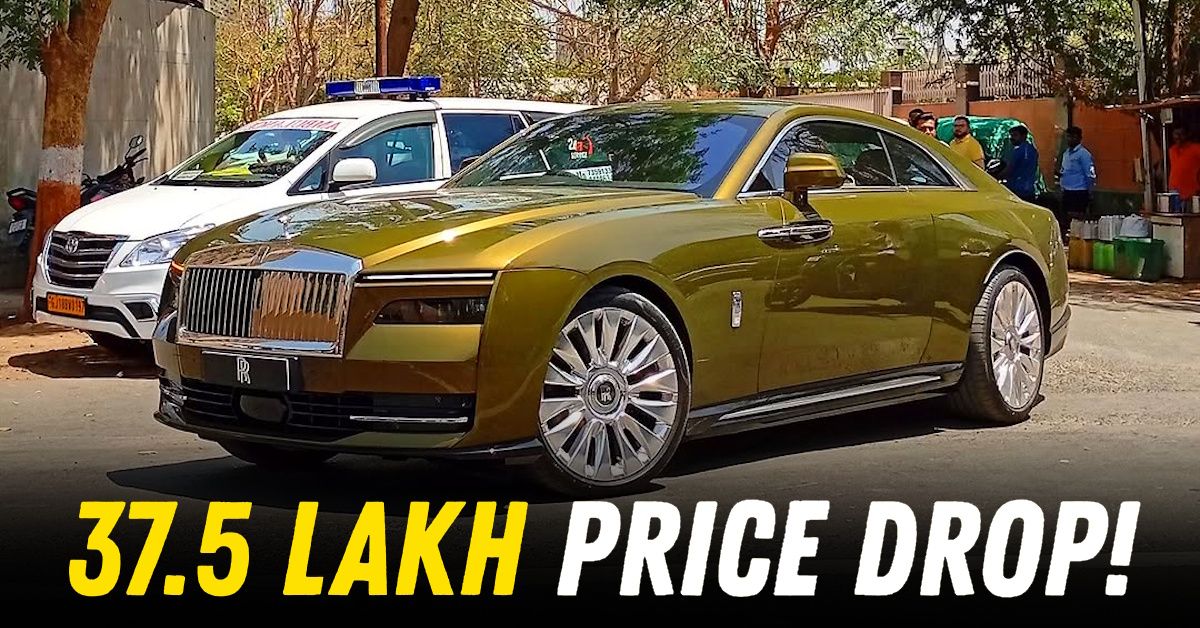EVs Get A Massive Price Cut Of Up To 37.5 Lakh In This Indian State!


Electric vehicle (EV) buyers in Gujarat have just received the kind of news that can make anyone considering a switch to electric sit up and take notice. The state government has slashed the road tax on all pure electric vehicles from 6% down to just 1%, effective until March 31, 2026.
Let’s break it down with real numbers. Imagine you’re buying an electric car priced at ₹30 lakh. Under the old tax regime, you would have paid ₹1.8 lakh as road tax (6% of ₹30 lakh). Now, with the new 1% tax, you pay just ₹30,000. That’s a direct saving of ₹1.5 lakh—money that could go towards home charging equipment, a solar panel installation, or simply back in your pocket.
But the benefit isn’t just for mid-range buyers. The biggest winners are those buying premium EVs, where the tax saving scales up dramatically.
Take, for example, the Rolls-Royce Spectre—the most expensive electric car currently available in India, with a starting price of ₹7.5 crore. Previously, the road tax alone would have been a staggering ₹45 lakh. Now, it’s down to ₹7.5 lakh, resulting in a jaw-dropping saving of ₹37.5 lakh. For luxury buyers, this is a meaningful reduction and makes the prospect of going electric even more attractive.
The motivation behind this decision is straightforward: EV sales in Gujarat have plummeted over the past year. After the state government withdrew earlier subsidies—₹1.5 lakh for four-wheelers under ₹15 lakh and ₹25,000 for two-wheelers—sales dropped by over 43%. In 2023, 88,614 EVs were sold in the state, but that number fell to just 50,010 in 2024. The government is hoping that this new tax cut will revive interest and put Gujarat back on the map as a leader in green mobility.
Under the previous subsidy regime, the biggest savings were reserved for buyers of more affordable EVs (under ₹15 lakh). Now, with the tax cut applying to all EVs regardless of price, even buyers of high-end models can enjoy significant savings. For a ₹15 lakh EV, the saving is ₹45,000—less than the previous subsidy, but for anything above ₹15 lakh, the new tax cut is more generous. This shift could help broaden the appeal of EVs to a wider audience, from everyday commuters to luxury car enthusiasts.
The process has been streamlined for convenience. Buyers must register their new EVs online through the Vahan 4.0 portal. This digitised system not only makes the paperwork easier but also ensures that the tax benefit is applied automatically. It’s important to note, however, that the scheme is strictly for pure electric vehicles—hybrids, even strong ones, are not eligible.
Dealers and industry watchers believe this move could significantly boost EV sales in Gujarat, possibly pushing the state into the top 10 for EV adoption nationally. Other states have seen similar surges in sales after slashing vehicle taxes, and Gujarat is keen to replicate that success. The government’s broader vision includes deploying 2 lakh EVs by 2025, reducing carbon emissions, and investing in charging infrastructure and battery manufacturing.
For buyers, the new tax cut is a clear incentive to consider electric over petrol or diesel. Whether you’re looking at a practical family EV or dreaming of a Rolls-Royce Spectre, the savings are substantial and immediate. While some may argue that the earlier subsidies were better for budget-conscious buyers, there’s no denying that this latest move makes EVs more accessible across the board.
If you’ve been waiting for the right time to go electric in Gujarat, that time might just be now. The state’s bold step could well be the spark that reignites India’s EV revolution—one massive price cut at a time.